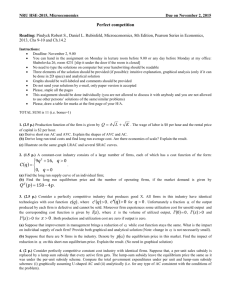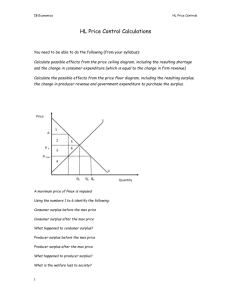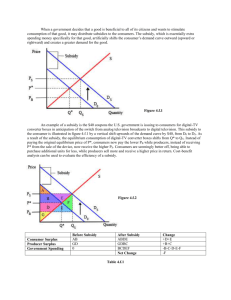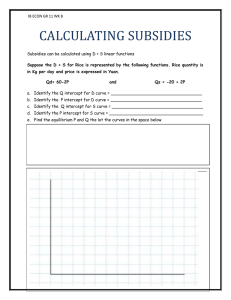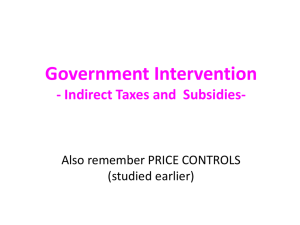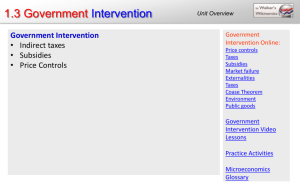Answers to Problem Set 3
advertisement
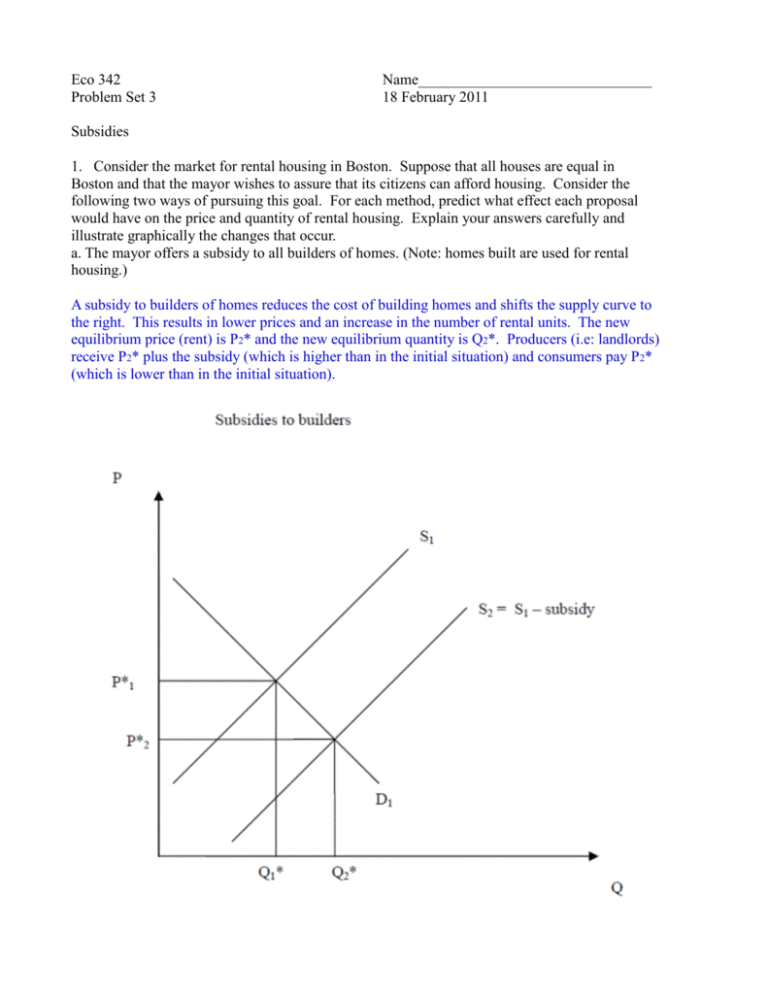
Eco 342 Problem Set 3 Name_______________________________ 18 February 2011 Subsidies 1. Consider the market for rental housing in Boston. Suppose that all houses are equal in Boston and that the mayor wishes to assure that its citizens can afford housing. Consider the following two ways of pursuing this goal. For each method, predict what effect each proposal would have on the price and quantity of rental housing. Explain your answers carefully and illustrate graphically the changes that occur. a. The mayor offers a subsidy to all builders of homes. (Note: homes built are used for rental housing.) A subsidy to builders of homes reduces the cost of building homes and shifts the supply curve to the right. This results in lower prices and an increase in the number of rental units. The new equilibrium price (rent) is P2* and the new equilibrium quantity is Q2*. Producers (i.e: landlords) receive P2* plus the subsidy (which is higher than in the initial situation) and consumers pay P2* (which is lower than in the initial situation). b. The mayor provides a subsidy directly to renters. The subsidy to renters shifts the demand curve for apartments to the right resulting in higher rents and a greater number of apartments. The new equilibrium price (rent) is P2* and the new equilibrium quantity is Q2*. Producers (i.e: landlords) receive P2* (which is higher than in the initial situation) and consumers pay P2* minus the subsidy (which is lower than in the initial situation). c. Who gains and who loses from the implementation of policy (a) and (b)? Subsides to builders or renters lead to an increase in the number of rental units available. Effective rents paid by consumers decrease and effective rents received by landlords increase. Note that if we did a general equilibrium analysis we should also have considered how the government raised the money to finance the subsidies and who benefits and who gains from the government’s financing decision. 2. Suppose that the government provides a per unit subsidy to producers of television sets. Show graphically and with the help of a welfare table how (i) consumer surplus, (ii) producer surplus, (iii) government surplus, (iv) social surplus, (v) deadweight loss (DWL), (vi) the price consumers pay, (vii) the price producers receive change. With a per unit subsidy on producers of television sets, the (effective) supply curve shifts to the right by the amount of the subsidy. With a subsidy of $S per unit, the new (effective) supply curve is $S below the old supply curve, as shown below. Alternatively, you could use the “wedge” argument by starting at the equilibrium quantity (Q*) and moving to the right (the opposite of a tax) until the vertical distance between the supply and demand curves is exactly equal to the amount of the subsidy. P* = Price consumers pay before subsidy = Price producers receive before subsidy Pc = Price consumers pay after subsidy Pp’ = Price producers receive after subsidy The change in social surplus can be described as follows: Consumers are better off (their post-subsidy price to pay has fallen to PC). Producers are also better off (their post-subsidy price to receive has risen to PP’). But the government (i.e., taxpayers) must pay an amount that exceeds the combined gains to producers and consumers by D, the deadweight loss.


